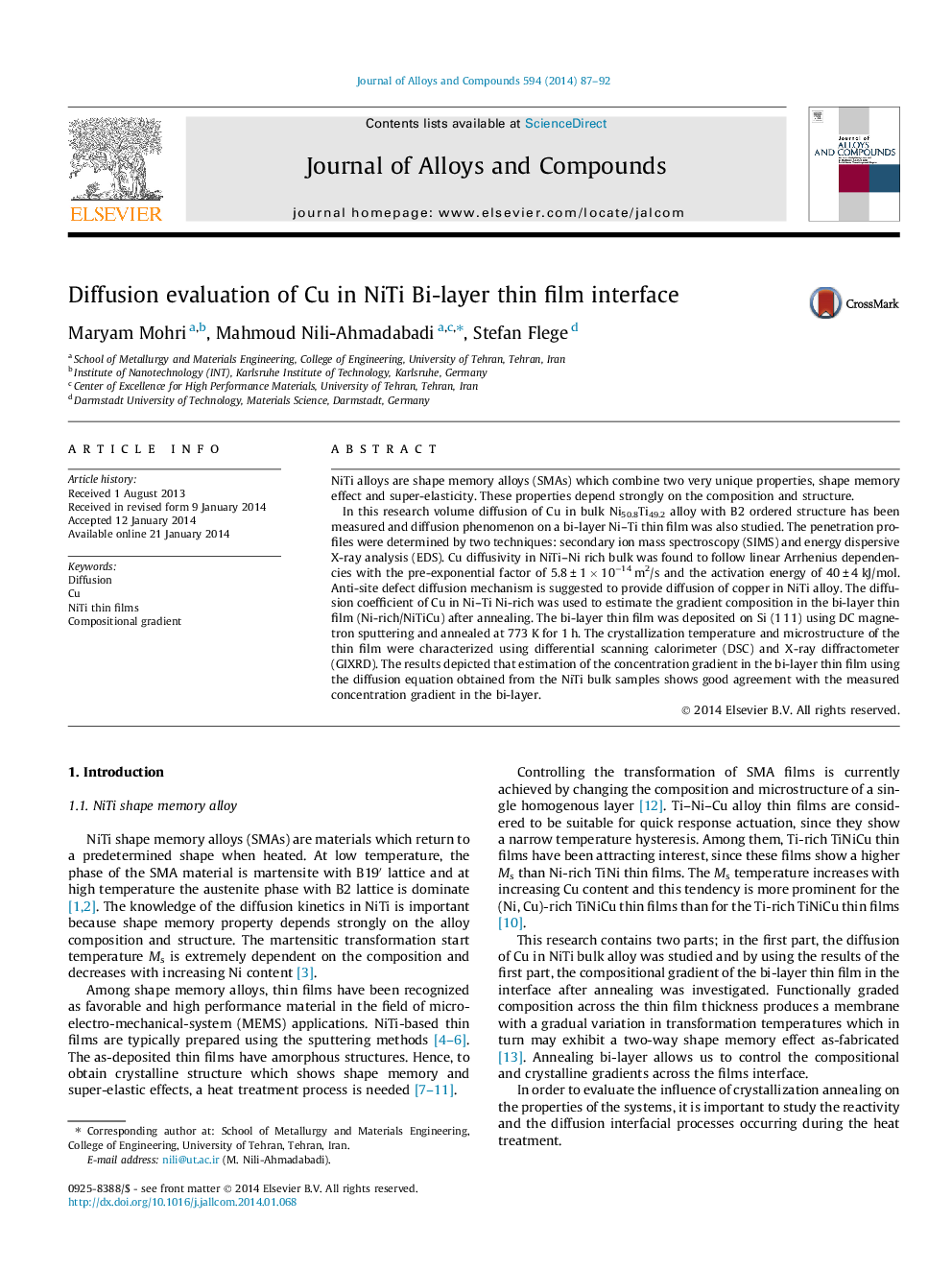| Article ID | Journal | Published Year | Pages | File Type |
|---|---|---|---|---|
| 1611443 | Journal of Alloys and Compounds | 2014 | 6 Pages |
•An Arrhenius equation was derived for Cu diffusion in NiTi alloy.•Ni-rich/NiTiCu bi-layer thin film was sputter and crystallized at 773 for 1 h.•The depth profile of Cu in the bi-layer was measured by SIMS.•The compositional gradient in the interface of bi-layer was measured and calculated.
NiTi alloys are shape memory alloys (SMAs) which combine two very unique properties, shape memory effect and super-elasticity. These properties depend strongly on the composition and structure.In this research volume diffusion of Cu in bulk Ni50.8Ti49.2 alloy with B2 ordered structure has been measured and diffusion phenomenon on a bi-layer Ni–Ti thin film was also studied. The penetration profiles were determined by two techniques: secondary ion mass spectroscopy (SIMS) and energy dispersive X-ray analysis (EDS). Cu diffusivity in NiTi–Ni rich bulk was found to follow linear Arrhenius dependencies with the pre-exponential factor of 5.8 ± 1 × 10−14 m2/s and the activation energy of 40 ± 4 kJ/mol. Anti-site defect diffusion mechanism is suggested to provide diffusion of copper in NiTi alloy. The diffusion coefficient of Cu in Ni–Ti Ni-rich was used to estimate the gradient composition in the bi-layer thin film (Ni-rich/NiTiCu) after annealing. The bi-layer thin film was deposited on Si (1 1 1) using DC magnetron sputtering and annealed at 773 K for 1 h. The crystallization temperature and microstructure of the thin film were characterized using differential scanning calorimeter (DSC) and X-ray diffractometer (GIXRD). The results depicted that estimation of the concentration gradient in the bi-layer thin film using the diffusion equation obtained from the NiTi bulk samples shows good agreement with the measured concentration gradient in the bi-layer.
